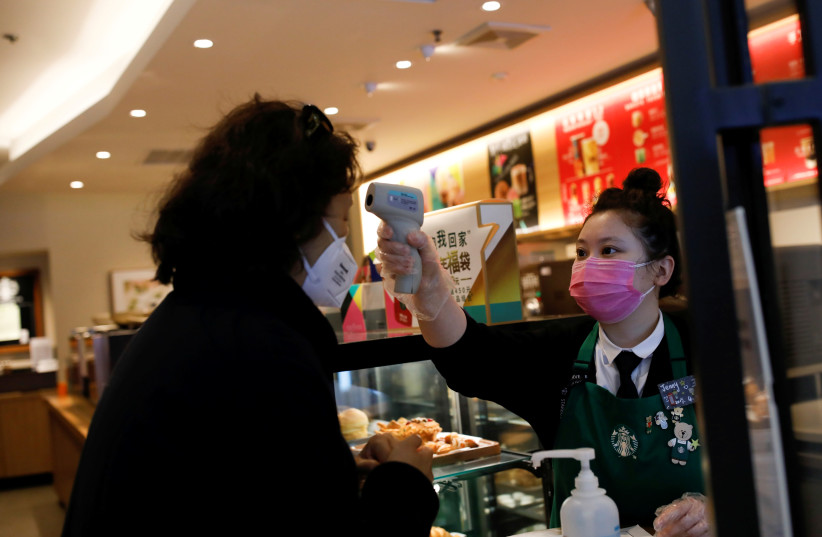Home thermometers – a strip placed on the forehead or a digital one put under the tongue – are not very accurate, and if they run on a battery that died, the user may desperately need to search for a working device.
Since fever is the most commonly cited symptom of COVID-19 and an early sign of many other viral infections, a better way should be found. To deal with this, a team led by researchers at the University of Washington in Seattle has created an app called FeverPhone that turns smartphones into thermometers without adding new hardware.
Instead, the app uses the phone’s touchscreen and its existing battery temperature sensors to gather data that a machine-learning model uses to estimate people’s core body temperatures. When the researchers tested FeverPhone on 37 patients in an emergency department, the app estimated core body temperatures with accuracy comparable to some consumer thermometers.
The team recently published its findings in Proceedings of the ACM (Association for Computing Machinery) on Interactive, Mobile, Wearable and Ubiquitous Technologies under the title “FeverPhone: Accessible Core-Body Temperature Sensing for Fever Monitoring Using Commodity Smartphones.”
“As an undergraduate, I was doing research in a lab where we wanted to show that you could use the temperature sensor in a smartphone to measure air temperature,” said lead author and doctoral student Joseph Breda. “When I came to the University of Washington, my adviser and I wondered how we could apply a similar technique for health. We decided to measure fever in an accessible way. The primary concern with temperature isn’t that it’s a difficult signal to measure – it’s just that people don’t have thermometers.”

Using the phone's hardware to measure fever
The app is the first to use existing phone sensors and screens to estimate whether people have fevers. It needs more training data to be widely used, Breda said, but for doctors, the potential of such technology is exciting.
“In a wave of influenza, for instance, people may take five days or even a week to run to the emergency room, so if people could share fever results with public health agencies through the app, this earlier sign could help us intervene much sooner,” Dr. Mastafa Springston said.
Clinical-grade thermometers use tiny sensors known as thermistors to estimate body temperature. Off-the-shelf smartphones also happen to contain thermistors, mostly used to monitor the temperature of the battery. But the UW researchers realized they could use these sensors to track heat transfer between a person and a phone. The phone touchscreen could sense skin-to-phone contact, and the thermistors could gauge the air temperature and the rise in heat when the phone touched a body.
To simulate a warm forehead, the researchers heated a plastic bag of water with a sous-vide machine (water oven, which is like a slow cooker that heats liquids without it evaporating) and pressed phone screens against the bag. To account for variations in circumstances, such as different people using different phones, the researchers tested three phone models and also added accessories such as a screen protector and a case, and changed the pressure on the phone.
The researchers used the data from different test cases to train a machine-learning model that used the complex interactions to estimate body temperature. Since the sensors are supposed to gauge the phone’s battery heat, the app tracks how quickly the phone heats up and then uses the touchscreen data to account for how much of that comes from a person touching it.
They then tested the app on people, taking FeverPhones to the emergency department at UW’s School of Medicine for a clinical trial to compare its temperature estimates against an oral thermometer reading. They recruited 37 participants, 16 of whom had at least a mild fever. Participants pressed the touchscreen against their foreheads for about 90 seconds, which the researchers found to be the ideal time to sense body heat transferring to the phone.
Overall, FeverPhone estimated patient core body temperatures with an average error of about 0.23°C, which is less than half of the clinically acceptable range of 0.5°C.
The researchers have highlighted a few areas for further investigation – they didn’t include participants with severe fevers above 38.6°C because these temperatures are easy to diagnose and because sweaty skin tends to confound other skin-contact thermometers, according to the team.
“We started with smartphones since they’re ubiquitous and easy to get data from,” Breda concluded. “I’m already working on seeing if we can get a similar signal with a smartwatch.”
